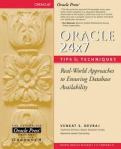 Venkat S. Devraj, co-founder and CTO of database and application automation software provider Stratavia and author of Oracle 24×7 Tips & Techniques (McGraw-Hill), had the following to say about the number of DBA’s necessary to administer an Oracle DB environment:
Venkat S. Devraj, co-founder and CTO of database and application automation software provider Stratavia and author of Oracle 24×7 Tips & Techniques (McGraw-Hill), had the following to say about the number of DBA’s necessary to administer an Oracle DB environment:
Every so often, I come across IT Managers bragging that they have a ratio of “50 DB instances to 1 DBA” or “80 DBs to 1 DBA”… — Is that supposed to be good? And conversely, is a lower ratio such as “5 to 1” necessarily bad? Compared to what? In response, I get back vague assertions such as “well, the average in the database industry seems to be “20 to 1”.
Venkat recommends a benchmarking approach:
The reality is, a unidimensional *and* subjective ratio, based on so-called industry best practices, never reveals the entire picture. A better method (albeit also subjective) to evaluate and improve DBA effectiveness would be to establish the current productivity level (“PL”) as a baseline, initiate ways to enhance it and carry out comparisons on an ongoing basis against this baseline. Cross-industry comparisons seldom make sense, however the PL from other high-performing IT groups in similar companies/industries may serve as a decent benchmark.
Finally, Venkat recommends developing a 2X2 matrix where an “Environmental Complexity Score” is charted against a “Delivery Maturity Score”. Your PL depends on where you land in the 2X2 matrix. If you picture the X-Y chart as comprising 4 quadrants (left top, left bottom, right top and right bottom), the left top is “Bad”, the left bottom is “Mediocre”, the right top is “Good” and the right bottom is “Excellent”.
For a full description of Mr. Devraj’s approach, see: Selective Deliberations on Databases, Data Center Automation & Cloud Computing


